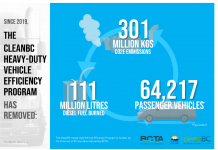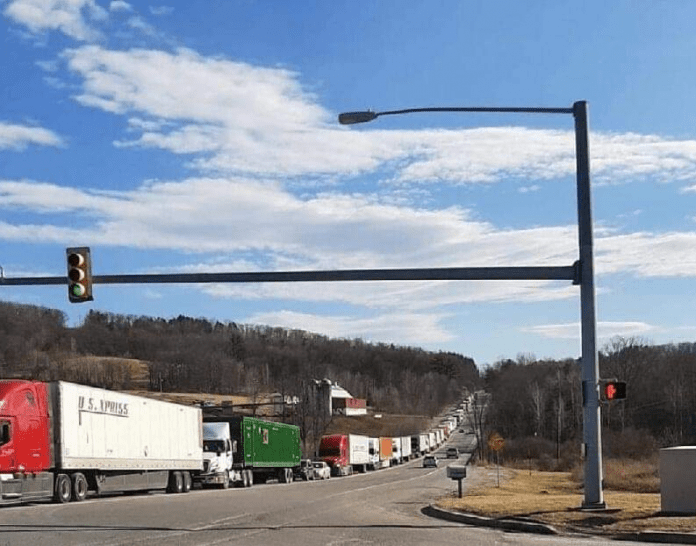In the past week, Canada has experienced two tragic highway accidents involving large trucks. One week ago, a devastating collision in Manitoba resulted in the loss of 16 lives when a semi-truck collided with a bus. Then, just this week, another horrifying accident occurred on the 401 in the Greater Toronto Area (GTA) involving a tractor hauling two tankers of highly flammable liquid, which exploded in a massive fireball, claiming the lives of two truck drivers and leading to the closure of Canada’s busiest highway for several days.
These incidents, although different in nature, draw attention to the issue of truck safety. Both accidents have rightfully intensified scrutiny on the trucking industry. The loss of so many lives is a tragedy, and as a part of the industry, we mourn the loss of the two drivers who were diligently performing their jobs with safety and professionalism in mind.
Without assigning blame, it is crucial for our industry to address challenging questions. In the case of the truck-bus collision in Manitoba, the police have already stated that the truck had the right of way. A Road Safety Week Canada report indicates that 40% of accidents and 30% of fatalities occur at intersections, potentially due to driver error, distracted driving, or equipment failure. The tanker explosion on Highway 401 in the GTA is a worrisome incident that demands attention.
The eastbound LCV (Long Combination Vehicle) tanker lost control on the 401 and crashed into the wall separating the east and west lanes. The tanks rolled over the wall, resulting in a catastrophic explosion as the highly flammable load ignited. Tragically, the two truck drivers lost their lives at the scene.
The safety of LCVs has raised concerns within the industry. LCVs were initially introduced in 2009 with certain restrictions, starting as a limited pilot program to transport empty trailers. Over time, the program evolved to allow loads in the first trailer while keeping the rear trailer empty, and eventually, both trailers were permitted to be loaded, with the front trailer always carrying the heaviest load. The industry presented LCVs as a means to reduce the number of trucks on the road, improve fuel efficiency by approximately 30%, and contribute to environmental conservation. According to the Ontario Trucking Association, widespread LCV use could potentially remove 2,800 trucks from Toronto-area highways daily, leading to cost savings in terms of drivers, equipment, and fuel.
The initial concept behind LCVs was to transport lighter loads, but over time, that principle seems to have shifted. In the Pickering 401 crash, the tankers were carrying a highly flammable liquid, which constituted a heavy and constantly shifting load. This occurred on one of North America’s busiest roads, as Highway 401 across Toronto is notorious for its traffic volume. Road conditions and unpredictable events can change in an instant, and aggressive driving, speeding, and distracted driving are unfortunately common occurrences on the 401. Sending fully loaded LCVs onto highways like this may be courting trouble that even the most skilled drivers cannot always avoid.
LCVs, with their weight and size, present challenges in handling and require longer distances to slow down and stop. The combination of weight and momentum can have deadly consequences. A single distracted or erratic driver in another vehicle can lead to a catastrophic accident.
Australia permits LCVs, known as “road trains,” with 2 to 4 trailers, but they are restricted to isolated roads in the Outback and are speed-limited to 90 km/h. The 401 across Toronto is not comparable to the Outback, and LCVs on 400 series highways do not have speed limitations. Additionally, the weather conditions in Australia differ significantly from Canada, where icy, snowy, and wet conditions are prevalent on nearly half of the days.
Driving an LCV is a challenge even for the most skilled drivers. Even a slight movement of the steering wheel can have a multiplied effect on the rear trailer, leading to significant movement. Making sudden maneuvers on a busy highway to avoid hazards can quickly destabilize the truck, potentially resulting in irreparable consequences.
The presence of a constantly shifting liquid load adds to the stress and unpredictability for drivers who must remain vigilant and prepared for any potential danger. Skilled drivers exist, but the unknowns of the road, sudden actions by other drivers, changing road conditions, and external factors like weather, construction, and more, always need to be considered.
Operating LCVs requires “Top Gun” drivers, and extensive training is crucial. However, even with the best training, a momentary steering mistake can escalate into a catastrophic event.
When LCVs were introduced, the focus was on energy conservation and safety, and this approach gained support from politicians. However, the question remains: what is truly safe about having longer and heavier vehicles traveling at higher speeds on 400 series highways, taking twice as long to stop and exerting such deadly force? Was this initiative primarily driven by cost reduction disguised as safety?
While cost control is important, prioritizing safe practices and ensuring the safety of our roads ultimately results in the lowest overall costs. The price we pay in terms of lives lost is simply too high.






















